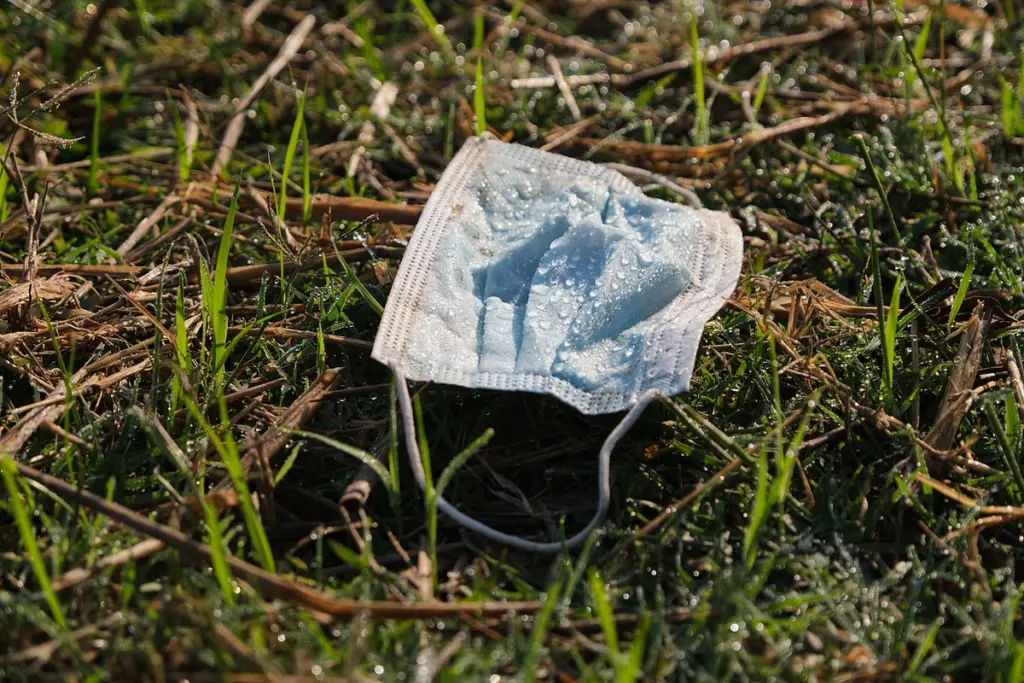
The widespread use of disposable face masks during the COVID-19 pandemic has led to significant environmental concerns, with billions of masks improperly discarded and contributing to microplastic pollution. A recent study published in the journal Environment Pollution highlights the severe ecological impact of these masks, particularly the popular N95 and other respiratory masks, which are found to be more damaging than surgical masks.
The study estimates a staggering 9,000 percent increase in the use of single-use face masks from March 2020 to October 2020. According to the World Health Organization (WHO), approximately 89 million medical disposable face masks (DFMs) were required daily during the pandemic. Globally, an additional 129 billion DFMs were used each month, exacerbating the environmental crisis.
The Composition and Impact of Face Masks
Most disposable masks are made from polypropylene, a type of plastic, but they also contain other polymers such as polyethylene, polyamide, and polystyrene. These materials serve as barriers by filtering particles and droplets emitted during coughing, sneezing, and speaking. Despite their effectiveness in protecting against airborne pathogens, these masks pose a significant environmental threat due to their non-recyclable nature.
Research indicates that respiratory masks like N95 and N100 are more effective in preventing inhalation of health hazards such as dust, smoke, and gases compared to surgical masks. However, the improper disposal of these masks has led to widespread pollution, with masks littering streets, waterways, parks, and beaches worldwide.
By the Numbers: A Global Crisis
At the peak of the pandemic, around 3.4 billion DFMs were discarded worldwide each day. It is estimated that 4.3 million tonnes of non-recyclable contaminated plastic waste were produced between September 2019 and October 2020 across 11 countries, including the United States, the United Kingdom, and Australia.
Experiments have shown that Filtering Face Pieces (FFPs) release three to four times more microplastic particles in water compared to medical masks. The study also identified chemicals such as bisphenol B and sulfosuccinate as leachables from medical and surgical masks, which can cause endocrine disruption and mimic estrogen in humans and animals.
The Environmental and Health Implications
The primary type of microplastics found in water leachates from face masks is polypropylene, accounting for 93-97 percent in medical masks and DFMs, and 82-83 percent in FFPs. Other polymers like polyethylene and polycarbonate are also present, albeit in smaller quantities. These substances pose serious risks to human health and the environment, potentially causing birth defects, cancer, and impacting the nervous and immune systems.
The study highlights that FFPs release a broader variety and larger share of other polymers compared to medical masks and DFMs. Fragments and fibers, particularly debris of polypropylene fibers, were the most common microplastic morphotype identified in water samples.
Policy and Future Directions
The researchers emphasize the need for science-based policy recommendations to address the health and environmental impacts of microplastics and associated chemical additives from DFMs. They point out a significant gap in understanding plastic regulation and management, urging collaboration between researchers, PPE producers, waste managers, governments, and policymakers.
As the world continues to grapple with the aftermath of the COVID-19 pandemic, addressing the environmental fallout of disposable face masks is crucial. Integrated policies and public awareness campaigns are essential to mitigate the impact of microplastic pollution and ensure a sustainable future.





